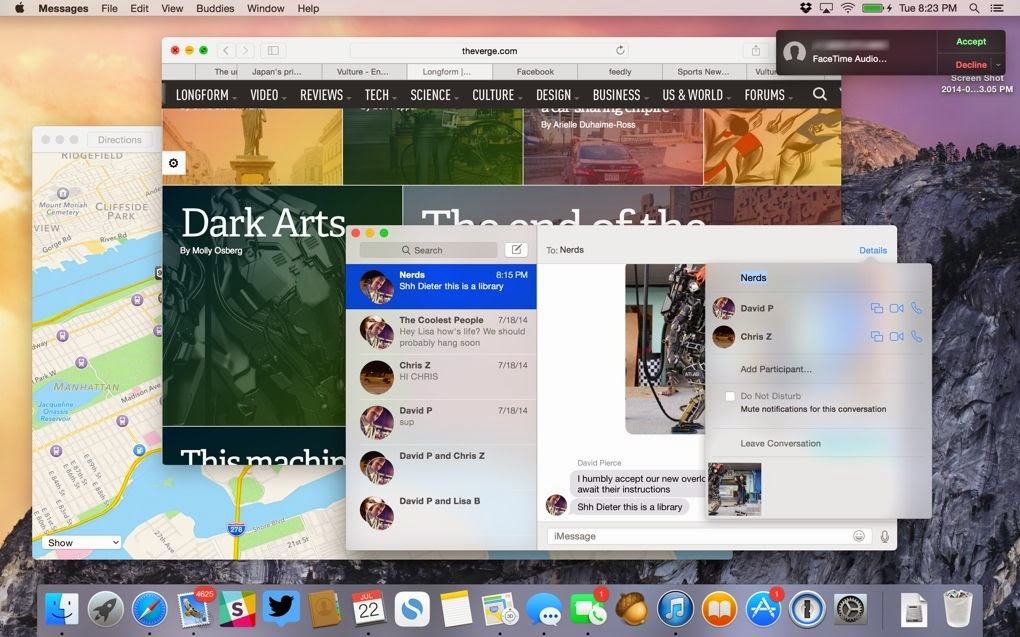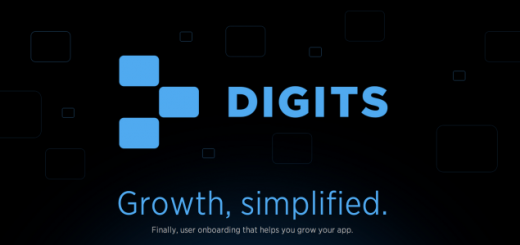It turns it into both hub and spoke of a constantly connected, conversing ecosystem of Apple products, in which you’re able to do anything you want on any device you want. It still rents event space and touts the new features, but your new operating system arrives more like an tune-up than a new car.
But the reason Yosemite feels bigger, more important, is that it feels like the beginning of something new for Apple. Upgrading cost money; you had to go to the store to get the necessary floppy disk or a CD; the new OS was expected to be different and better in basically every way. For nearly two decades, the release of a new PC operating system was an event. Yosemite doesn’t promise to make my Mac look like my iPhone; it promises to make them work together constantly. You open the app store, click a button, and poof: a few things change but everything stays mostly the same. This year’s model, OS X 10.10 Yosemite, is a little different. The last few years, Apple’s taken a decidedly simpler approach. OS X still looks like OS X, but Yosemite turns your Mac into more than just a PC. And it improves most of Apple’s built-in apps, from Mail to Maps and everything in between. It’s much more powerful, showing movie times and map results, and topical Wikipedia pages, but it can’t do a simple Google search. Some are small: there’s no “full-screen” button in the top right corner of the window, you just press the green button in the stoplight menu. Spotlight doesn’t pop up in the corner of your screen, but in the center, in a gray window like Alfred. If you’re using an iPhone or iPad running iOS 8.1 and a Mac running Yosemite, have Bluetooth on, and are logged into the same iCloud account and Wi-Fi network on both devices, your devices will suddenly begin to constantly talk to each other.
Yosemite is an excellent desktop operating system, but in a world where “desktop operating system” is starting to feel as antiquated a phrase as “cordless telephone,” It feels outdated in places, the whole idea of the “desktop” just feels pointless, and saving and organizing files is still more complex than it should be in the age of limitless searchable cloud storage, but it’s true to what Apple believes in. It’s not Windows 10, with big ideas about how our devices are just different sizes of the same thing, how the interface and settings and apps should be consistent everywhere. There’s more to Yosemite, including lots of behind-the-scenes changes and graphics improvements and more access to built-in apps, Finder, the sharing menu, and Notification Center. My favorite feature of the Continuity group, and probably the thing about Yosemite that most changed how I go about my day, is that Messages now, let you send SMS text messages from your computer.
After a surprisingly convoluted setup process (you need to change settings in three different apps on two different platforms, and enter a passcode), when your phone rings, so does your Mac. The Today view in the Notification Center is handy, and the Mac’s handling of notifications has been as messy as ever.
Microsoft believes in a single experience for all devices; Apple believes every device ought to have its own. The best features, the most important and innovative features, do affect every device you own, as long as you own Apple devices.
Whenever you open a new tab on your Mac, or start composing an email or text, an icon appears in the bottom left corner of the iPhone’s lock screen; swipe it up and you’ll go right to where you were on your PC.











